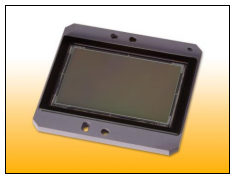After my yesterday’s post about the rumor that Leica M10 will have live view capabilities, I got some interesting comments from readers about the possibilities of adding new technologies in the next M camera. Here is John’s comment:
It’s quite possible that the next digital Leica M (M10?) will include “live view”. IMHO, the hint can be found in the latest top of the line CCD from Kodak: the KAI-29050. This new 24x36mm 29 megapixel (!) sensor is an “interline transfer” sensor (i.e. not the traditional “full frame” technology used by Leica so far). A product summary pdf file has recently been added. See the bottom of the page: http://www.kodak.com/ek/US/en/Image_Sensor_Solutions/Products/Interline_CCD.htm (direct link to the PDF file of the Kodak KAI-29050 sensor).
While I agree that the “video” factor might not be that appealing to most Leica M users (myself included), I believe that there is another key advantage to using this new (to Leica) interline transfer technology: by using the KAI-29050’s built-in electronic shutter (which does not exist in a “full-frame” sensor), Leica would be able to carry out essential calculations to achieve vastly improved (more accurate) exposure and white balance, milliseconds before the actual exposure.
In such case, the use of the Leica S2’s MAESTRO “ASIC” chip would be of considerable help to do the number crinching. There’s another rumor for you: the Leica M10 will use the MAESTRO chip! 😉
You raise a good point – how to manually focus with a rangefinder [camera] … without a rangefinder ?
Another important advantage of using an interline transfer sensor (such as the Kodak KAI-29050) is that it would allow for both a traditional optical viewfinder/rangefinder (OVF) and an electronic viewfinder (EVF). AFAIK, the only currently available digital camera with such a “hybrid” viewfinder (i.e. both OVF and EVF) is the much talked-about Fuji FinePix X100 (http://www.finepix-x100.com).
If Leica is to include such a hybrid viewfinder (as had been strongly suggested in a luminous-landscape.com article, it will have to use an interline transfer sensor.
So then, how would you focus such an “M10” without its traditional (optical) rangefinder? By relying on the contrast-testing ability of the (KAI-29050) sensor to tell you if the picture is in focus or not (whether through the camera’s EVF or on the rear screen ). And BTW, that is how AF work in all point-and-shoot digital cameras today (including the Leica X1 as mentioned above).
Look at this new way of focusing as a digital version of the (good) old Visoflex. Currently, if you want to use a 200mm or 280mm Telyt (or even bigger) on a Leica M camera, you still have to use a Visoflex. A new hybrid viewfinder (or using live view on the rear screen) would essentially do the same thing – but with autofocus confirmation on top of that!
And if Leica is really clever, they might even want to include electronic contacts on the M10’s lens mount to connect to a new series of more advanced M lenses – with full AF capability! Leica’s partner, Panasonic, as the maker of the G2 and G3, could turn out to be of great help to Leica in achieving these goals.
And no, all of this modern wizardry will not turn our favorite “M” into yet another “sino-japanese gadget”. I would not want that, and I suspect neither would Leica’s engineers and designers. A better, higher resolution OLED (or AMOLED) screen would indeed be great.
In the end, it’s all about taking better pictures without the camera getting in the way … And that’s why I prefer the Leica M.











